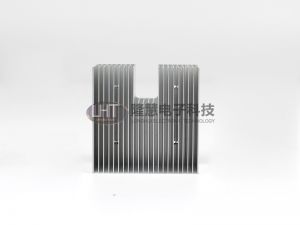
Nowadays, the electronic products around us are becoming more and more diverse. When we choose, we will not only compare their functions, but also consider the appearance. The thin and light appearance is the current development trend of electronic products. Therefore, it will also face a challenge, that is, the internal space of electronic products is becoming narrower and narrower, but the heat dissipation capacity has always been a problem that cannot be ignored in electronic products. How to fully help electronic products to dissipate heat in a limited space is a special need. Points of concern.
This requires the radiator to be lightweight, strong in thermal conductivity, and strong in plasticity. Only by relying on the limited size to maximize the heat dissipation performance, can it truly provide heat dissipation for electronic products. So what kind of material can I choose to make a radiator that meets the requirements in terms of dimensions and does not lose heat dissipation? Now let me take you to learn about several common materials used to make radiators today.
One, plastic radiator
Plastic radiators have been developed and promoted in Zhejiang, Beijing, Shandong, Xi’an and other places. Common plastic radiators are made by filling plastic with certain metal oxide powder, carbon powder, fiber or ceramic powder to improve it. The thermal conductivity. This kind of plastic radiator is extremely light in weight, which is in line with the needs of electronic products. In addition, it has strong plasticity in appearance and low cost, which has been favored by many manufacturers.
However, compared with the heat sink made of metal alloy, its thermal conductivity is not stable, the thermal conductivity varies greatly, and it cannot be ensured that it can be perfectly adapted to the working environment. It may even deform after working for a long time, so its safety and stability are Needs to be improved.
2. Copper radiator
The chemical properties of copper are unstable, and it is difficult to react with oxygen and water in the air at room temperature. Therefore, manufacturers do not need to perform sophisticated post-processing on copper radiators to ensure that it has a long service life. Secondly, the heat dissipation capacity of copper radiators can be regarded as excellent. It tends to absorb heat quickly and dissipate heat quickly. The heat dissipation capacity and corrosion resistance are both stronger than that of aluminum.
Although copper radiator has its advantages, the price is often very expensive, and it is generally not recommended to consider using this radiator if the economic conditions are limited. Moreover, the quality is very heavy and far can not meet the requirements of light and thin electronic products.
Three, aluminum radiator
Aluminum alloy is considered to be the hotter radiator manufacturing material on the market, among which the more high-quality aluminum alloys are 6063 and 6061. Although the heat dissipation performance is not as good as copper, the heat dissipation coefficient can reach 201W/mK, which can fully meet the needs of electronic products for heat dissipation. The light weight, easy processing, beautiful appearance, and affordable characteristics make it particularly widely used.

 English
English 中文站
中文站

